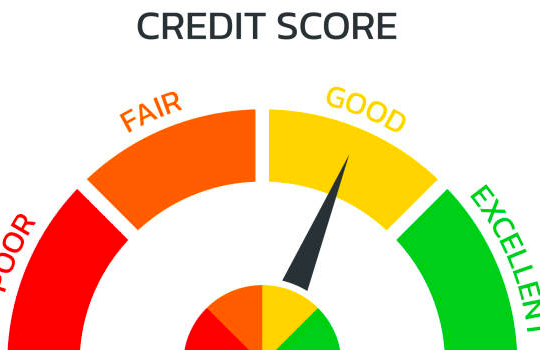Investing in fixed-income instruments for high returns can be a viable strategy, but it’s important to understand the trade-offs involved. Fixed-income instruments, such as bonds and certificates of deposit, generally offer more stable returns compared to riskier assets like stocks. However, the trade-off for stability is typically lower potential returns. Investors seeking high returns may need to consider a diversified portfolio that includes a mix of fixed-income and higher-risk assets to balance risk and reward according to their investment goals, risk tolerance, and time horizon.
Understanding Fixed-Income Instruments
Fixed-income instruments are investment vehicles that provide investors with fixed or predictable income streams over a specified period. These instruments are typically debt securities issued by governments, corporations, or other entities, and they offer regular interest payments to investors.
Here are some key types of fixed-income instruments:
1. Bonds: Bonds are the most common type of fixed-income instrument. They represent loans made by investors to issuers, such as governments or corporations, in exchange for regular interest payments and the return of the principal amount at maturity.
2. Treasury Securities: These are bonds issued by the government to fund its operations. Treasury securities, such as Treasury bills, notes, and bonds, are considered among the safest fixed-income instruments as they are backed by the full faith and credit of the government.
3. Corporate Bonds: These are debt securities issued by corporations to raise capital. Corporate bonds offer higher yields than government bonds but also carry higher credit risk.
4. Municipal Bonds: Municipal bonds are issued by state and local governments to finance public projects. They offer tax advantages as the interest earned is often exempt from federal income taxes.
5. Certificates of Deposit (CDs): CDs are time deposits offered by banks and credit unions. They offer a fixed interest rate for a specified period, and the principal is returned at maturity.
Assessing the Potential for High Returns
When considering fixed-income instruments for the potential of high returns, it’s important to set realistic expectations and understand the factors that influence returns in this asset class. Here are some key points to consider:
1. Yield and Interest Rates: The yield of a fixed-income instrument is a crucial factor in determining potential returns. Higher-yielding instruments, such as high-yield bonds or bonds with longer maturities, generally offer the potential for higher returns. However, it’s important to understand that higher yields often come with increased risk.
2. Credit Quality: The credit quality of the issuer plays a significant role in the potential returns of fixed-income instruments. Higher-rated bonds, such as those issued by governments or highly reputable corporations, typically offer lower yields but carry lower default risk. Lower-rated bonds, on the other hand, may offer higher yields but come with increased credit risk and the potential for default.
3. Market Conditions: Market conditions, particularly interest rates, impact the returns of fixed-income instruments. When interest rates rise, the prices of existing bonds tend to fall, resulting in lower returns. Conversely, when interest rates decline, bond prices tend to rise, potentially leading to higher returns. It’s important to consider the current interest rate environment and assess how it may impact the potential returns of fixed-income investments.
4. Duration and Maturity: The duration and maturity of fixed-income instruments also affect potential returns. Longer-term bonds generally offer higher yields but carry greater interest rate risk. Shorter-term instruments, such as Treasury bills or short-term bonds, may provide lower yields but offer greater stability.
Benefits of Investing in Fixed-Income Instruments
Investing in fixed-income instruments offers several benefits that make them attractive to a wide range of investors. Here are some key benefits of including fixed-income instruments in an investment portfolio:
1. Stable and Predictable Income: Fixed-income instruments provide investors with regular interest payments, which can serve as a stable source of income. This can be particularly beneficial for investors seeking a reliable cash flow or looking to meet specific income needs, such as retirees or individuals with short-term financial goals.
2. Capital Preservation: Fixed-income instruments are generally considered less volatile than equity investments. They offer a higher level of capital preservation as the principal amount is repaid at maturity (in the case of bonds) or upon completion of the investment period (such as certificates of deposit). This can help investors protect their initial investment and provide a level of stability to their portfolio.
3. Diversification and Risk Management: Including fixed-income instruments in a portfolio can enhance diversification by reducing the overall risk. Fixed-income investments often have a low correlation with equity investments, meaning they can help offset potential losses in a stock market downturn. This diversification can help manage risk and improve the risk-adjusted returns of the portfolio.
4. Income Stream in a Low-Interest Rate Environment: In times of low interest rates, fixed-income instruments can still provide a relatively attractive yield compared to cash holdings or savings accounts. Even if the absolute return may be lower, the stable income generated by fixed-income investments can help investors maintain purchasing power and preserve wealth.
5. Potential for Capital Appreciation: While fixed-income instruments are primarily focused on generating income, there is also the potential for capital appreciation. As interest rates decline, the value of existing fixed-income instruments may rise, resulting in capital gains. This can provide an additional source of return for investors.
6. Preservation of Purchasing Power: Fixed-income instruments can help preserve the purchasing power of invested capital over time. By earning a return that exceeds the rate of inflation, investors can protect their wealth from erosion caused by rising prices.
Conclusion: Finding the Right Strategy for Your Investment Goals
In conclusion, investing in fixed-income instruments can be a valuable strategy for investors seeking stability, regular income, and diversification within their investment portfolios. Fixed-income instruments offer benefits such as stable income streams, capital preservation, and potential capital appreciation. By understanding the different types of fixed-income instruments, assessing their potential for high returns, and considering the benefits and risks associated with them, investors can make informed decisions.
It is crucial to align your investment strategy with your specific goals, risk tolerance, and time horizon. Whether you are looking for income generation, capital preservation, or a balanced approach, incorporating fixed-income instruments can play a significant role in achieving your objectives. Additionally, diversification within the fixed-income asset class itself, such as diversifying by asset type, credit quality, maturity, geography, and sector, can help manage risks and maximize potential returns.
Also Read:
- Investment Taxation: Understanding Capital Gains, Dividends, and More
- The Impact Of Inflation On Investments
- What is the safest way to reduce investment risk?
- What are the major four assets of an investor portfolio?




